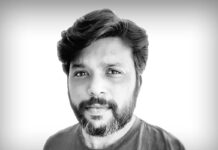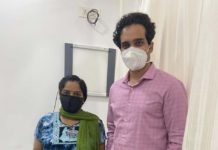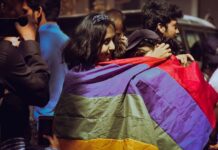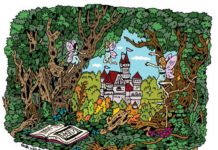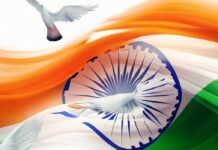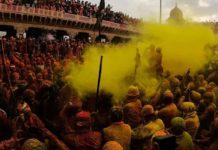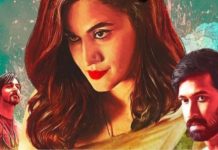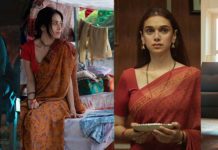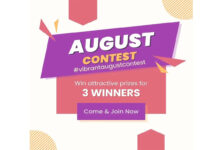Our country is diverse when it comes to dance forms.
During the primitive age when people used to communicate with gestures to express their feelings most effectively, Dance was used as a medium of expressions of the mind and heart through physical movements. Our country comprises age old traditional dances in the form of folk, contemporary and classical.
“Kathak, Kathakali, Bharatnatyam, Kuchipudi, Manipuri, and Odissi are some world famous dance forms that have originated in India.”
In an attempt to learn more about all spheres of Indian diversities through varied and different dance forms of India,
“We at The Uncommon Box wanted to create a novel experience for our readers by enlightening them about different art forms.”
This article is an exploration of varied Indian cultures and traditions and an attempt to understand the relationship between art and artists, with some useful insights from our Uncommon artist Anamika Saha, an elegant Odissi dancer who showcases one of the most popular classical dance styles of India and represents the culture and ethos of Orissa.
Odissi is considered as one of the oldest dance forms based on archeological evidence.
“A feast for your eyes and music for the soul, Odissi is a combination of grace, beauty, melody, spirituality, and divinity.”

The origin of the Odissi dance form is found in Natya Shastra and the estimated timeline varies from 500BCE to 500CE. Originating in the east coast province of Orissa in India as we know, Odissi was mainly performed by a woman to express religious stories or spiritual ideas for an avatar of Lord Vishnu- Lord Krishna was known as Jagannath.
“Initially known as a dance-drama genre in performance art, this sensuous and lyrical dance is distinct in terms of different characters representing great cultural and traditional style.”
This beautiful classical dance form lost its charm during the era of Islamic rule and was further suppressed during the British Raj. However, eventually these social and economic conditions and ban were disapproved by our Indian community and since then, we Indians have protected this form of art through the ages.
Today this particular dance practice has regained its value and popularity amongst Indian as well as foreign artists across the globe.
Traditional Odissi is more of a dance-drama, where the artist and the musicians play a mythical story using symbolic costumes, body movement, Abhinaya(expressions) and Mudras(gestural sign language).

This dance form is classified in two specific sections namely ‘NRITYA’ and ‘NATYA’. While ‘Nritya’ is dance which purely focuses on perfecting the hand movements and gestures, ‘Natya’ is a solo dance that emphasizes on expressive aspects.
“Interestingly, Odissi comprises two major dance forms within itself, one perfected by women and primarily focused on spiritual temple dance named ‘Maharis’ and the second performed mostly by men dressed themselves as women, named ‘Gotipuas’, which consists of more acrobatic and athletic moves, performed during village gatherings for more of a folksy entertainment.”

Modern Odissi productions, however, by Indian artists have presented a diverse range of experimental ideas, culture fusion, themes, and plays.
‘Kalpasutra’ a religious text book of Jainism, which was found in Gujarat, includes classical dance poses such as samapada, tribhangi, and chowka of Odissi.
This shows that Odissi was a well-known, admired and well accepted in distant regions of India. More detailed description of this practice can be found in other Hindu texts. However, the name “Odissi” was never mentioned in any of the texts. Today one can see the influences of the dance form in the temple carvings of Bhubaneshwar, Konarak and Puri.
During 12th century Odia temples, monasteries came under attacks from Muslim armies. These attacks not only saw plunder of these historical monuments but these raids also negatively affected the development of all dance forms and thus restricted the artists. It resulted in the destruction of temples, dance halls, and statues which eventually led to a broad decline in Odissi as a dance form.
During 19th century British colonial rule in India, the officials of the government ridiculed Indian art forms and traditions which again led to the further decline of various classical dance forms which were subjected to scornful attempt and discouragement.
Post-independence however, due to the effort to revive the Indian culture and traditions,
this art form was revived and accredited by researchers and scholars in the 20th century particularly by Guru Kavichandra Kalicharan Pattanayak, an Oriya poet, dramatist, and researcher. He is also credited with naming the dance form as “Odissi”.

About Anamika
Anamika Saha is an upcoming name in the Odissi dance scene in Kolkata. A resident of Baisnabghata, she got her initial dance training from none other than our very own Dona Ganguly, and later from Avirup Sengupta. She has also attended special classes under Sujita Mahapatra (daughter in law of Padmabibhusan Guru KeluCharanMahapatra), a true master of the Odissi dance form, and attended special classes from the dancing Diva Smt. Alokananda Roy.
Now she is associated with many schools in Kolkata, and as a performer, she has performed all over India and got many prestigious awards. Apart from dancing, she loves drawing, painting, Instagram-ing. She is also associated with an NGO under AvirupSengupta.
The Uncommon Box applauds Anamika for her commitment to the preservation of this dance form and wishes her all the best for all her endeavors.
We thank her for acquiescing to write this feature especially at the request of Team TUB.
You can follow her on:
Instagram: @saha_anamika
Content for this article was developed by Tasneem Bharmal in association with The Uncommon Box.
Are you a performance artist? Do you wish to share your knowledge and expertise with us on this forum? Write into us at theuncommonbox@gmail.com or use the Submit Your Story option on the website.
? Follow us @theuncommonbox and hashtag us #theuncommonbox on your uploads to be specially featured on our community on Instagram and on Facebook Group and Facebook Page.
? Our platform curates quality content from all genres of creativity – we invite writers, artists, fashion followers, stylists, photographers, performance artists, bloggers, lifestylists, Food Lovers – anyone with a passion for making their dreams come true. We are a forum sincerely dedicated to the promotion of all spheres of creativity. You can be a professional or an amateur – you can be anyone starting your hobby a fresh! All that matters is your creative spark! So join us today and live the Uncommon life!

